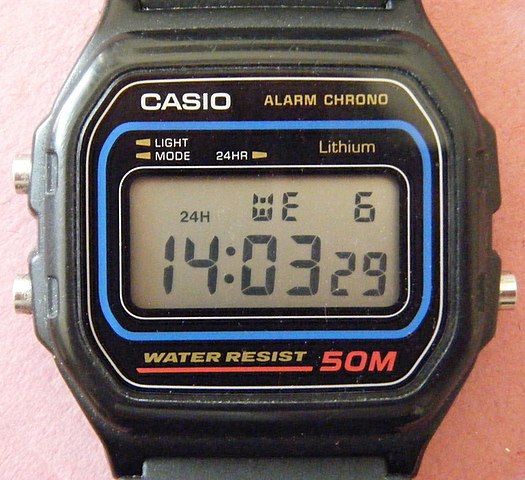LCD displays are literally everywhere. Once the province of expensive watches, the liquid crystal display now adorns everything from cheap calculators to massive televisions. They’re in color and black, and they fill our cars, our cameras, our phones, and even our kitchen appliances. Yet the LCD is only about 50 years old.
Quick history of LCD
 LCD stands for “liquid crystal display” and those three words say roughly all you need to know. It’s a way of displaying something using liquid crystals. Liquid crystals were first discovered in 1888 but there was no use for them. They were just a curiosity, crystals in a solution that could be made to line up if you gave them an electrical current. It took almost 75 years for anyone to really have any idea that they could be used for display technology. That idea came from Dr. George H. Heilmeyer.
LCD stands for “liquid crystal display” and those three words say roughly all you need to know. It’s a way of displaying something using liquid crystals. Liquid crystals were first discovered in 1888 but there was no use for them. They were just a curiosity, crystals in a solution that could be made to line up if you gave them an electrical current. It took almost 75 years for anyone to really have any idea that they could be used for display technology. That idea came from Dr. George H. Heilmeyer.
It was George H. Heilmeier who gets credit for the LCD. Believe it or not, it wasn’t until 1964 that anyone at all saw any practical use for liquid crystals. It was Dr. Heilmeiyer’s work that showed that you could actually cause liquid crystals to form opaque areas in a shape that you could control with electricity. That’s all it took, and the rest as they say is history.
How LCDs work
The basic idea of an LCD is that if you take a big goopy mix of liquid crystals and electrify them, the crystals affected by electricity all line up. If you do this using tiny little wires in a grid, you can build a display that you can control by computer.

In a simple LCD like the one above, the areas that are electrified cause the crystals to line up. Because they’re lined up, a polarizing filter can be used to make large, consistent areas where light doesn’t pass through.
In a more complex LCD array like on a TV, a light sits behind or to the side of a mesh with repeating red, green, and blue areas. An LCD sits in front of that, darkening individual areas. Because this kind of LCD can be partially darkened, many shades are possible and you’re able to see a vivid picture.
This technology has taken the world by storm. The first LCD watches became affordable in the 1970s, and LCD computer monitors and TVs started penetrating the public consciousness in the late 1990s. Today, we use LCDs for anyplace we need a little bit of information, whether that’s the battery level on our thermometers or who won that reality show you like. . They come in different shapes and sizes and despite early doubts, have come to equal or most every other display technology out there.
What’s better than LCD?
The only thing bad about LCDs is that they don’t directly shine light at you. The idea of a color LCD display is that light is blocked by the LCD. This means it’s practically impossible to get a true black and a bright white at the same time. So-called QLED or quantum-dot displays are a significant improvement to LCD technology, but they add to the overall thickness of the display. That’s why, in many cases, today’s flat TVs are thicker than ones from ten years ago.
If you want real top quality, whether it’s on your phone or TV, you want OLED. OLED means “organic light-emitting diode” and that’s a story for another article. Suffice it to say that OLED emits light directly, like a tiny tiny version of the jumbotrons used in stadiums. This makes it thinner, more efficient, and it can be both incredibly bright and incredibly dark at the same time.
OLED is coming down in price and there’s every reason to think it will take over from LCD at some point. However LCD is still much cheaper than OLED and it’s not likely to ever go away, especially in displays that don’t require top quality.
So, take a moment to think about Dr. Heilmeier while you’re reading this article. Why? Because there’s an overwhelming likelihood you’re reading it using one of his inventions.





